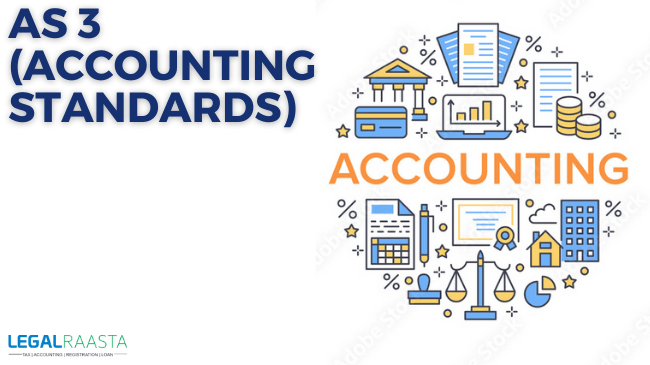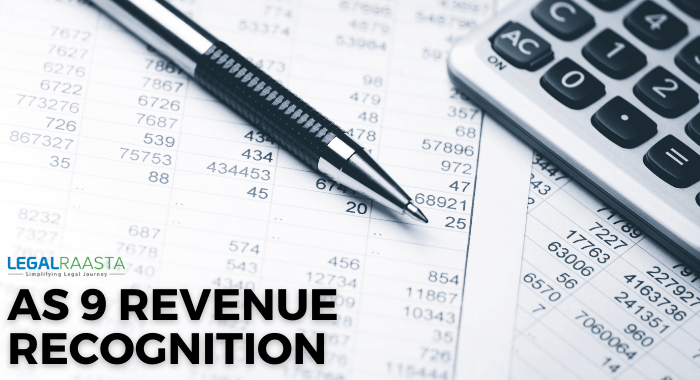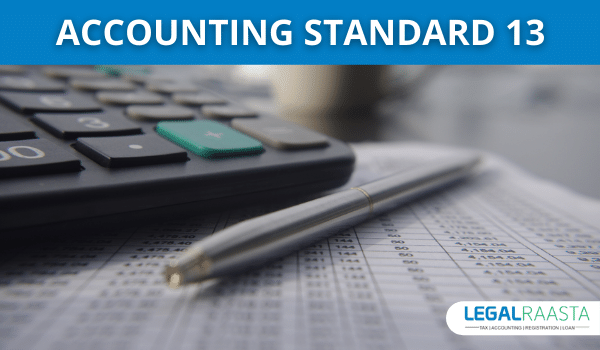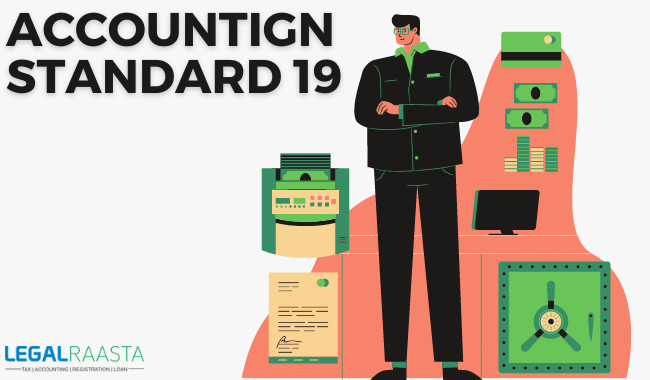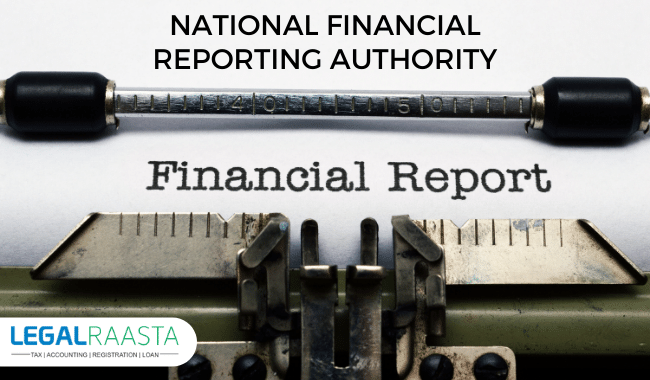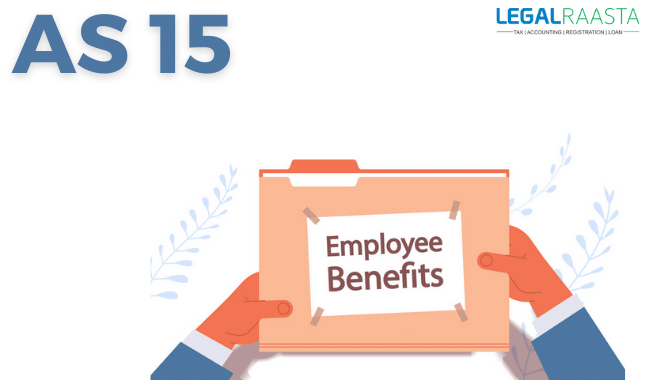AS 3 – Cash Flow Statements
Accounting Standard 3 (AS 3 )
Accounting Standard 3 (AS 3) arrangements with cash flow statement. This
accounting standard records data about changes in cash and cash counterparts of a substance during a specific period.
Such data is unveiled in the AS 3 cash flow statement showing cash flows from working, contributing, and financing exercises during an accounting period.
AS 3 cash flow statement is one of the significant budget summaries arranged alongside pay statements and accounting reports. This statement is ready to give data with respect to the cash flows of an undertaking.
Such data assists the partners with evaluating the capacity of the endeavor to create cash and cash counterparts. This appraisal in regards to a substance's capacity to create cash, it's planning, and its conviction helps the partners in taking different monetary choices.
Applicability of AS 3 Cash Flow Statements
The materialness of the AS 3 Cash flow statement has been characterized under the Companies Act, 2013. According to the definition in the demonstration, a fiscal report incorporates the accompanying:
- Balance sheet
- Profit and misfortune account/Income and use account
- Cash flow statement
- Statement of changes in value
Explanatory notesThus, AS 3 cash flow statements are to be ready by all organizations yet the demonstration additionally indicates a specific classification of organizations that are absolved from setting up something similar. Such organizations are One Person Company (OPC), Small Company, and Dormant Company.
- OPC implies an organization that has just one single individual as its part.
- A Small Company is a privately owned business with the greatest settled up capital of Rs. 50 lakhs and the greatest turnover of Rs. 2 crores.
- A Dormant Company is an inert organization that is framed for some future tasks or just to hold a resource and has no critical exchanges.
What are Cash and Cash Equivalents?
Cash counterparts are exceptionally fluid, transient ventures held to meet the momentary cash responsibilities of an endeavor. Speculations are sorted as cash counterparts just when these have a short development period running between 90 days or less.
This implies that such ventures should be the ones that get promptly changed over into cash. Additionally, such ventures are low in hazard as they are not dependent upon any material changes in esteem.
For instance, momentary attractive protections are treated as cash reciprocals as these are exceptionally fluid and can be changed over into cash promptly.
Note that any development of cash between cash or cash identical things is rejected from the cash flows of an endeavor. This is on the grounds that such development of cash isn't essential for working, contributing, and financing exercises. Maybe, it goes under the cash of the executives of an undertaking.
Presentation of AS 3 Cash Flow Statement
Each business element should introduce its cash flows in a
cash flow statement by grouping something very similar into working, contributing, and financing exercises. This order is significant as it helps the clients in evaluating the effect of such exercises on the monetary situation just as the cash equilibrium of an undertaking.
Further, such data about cash flows can be utilized to decide the association between such activities.
Operating Activities
The essential or the vital income-creating exercises of your business allude to the working exercises. These are the principle exercises that include the creation and offer of your labor and products.
Cash created from working exercises helps the partners in surveying the degree of dissolvability of your business. It shows the capacity of your business tasks to produce cash to keep up with its working ability and meet its monetary commitments. Such commitments incorporate making new speculations and reimbursing advances.
Further, data about the working cash flows in the past accounting time frames help in anticipating future working cash flows. Additionally, the working exercises of business help in deciding the net benefit or total deficit of your business.
Following are the instances of cash flows from working exercises:
I. Cash Inflows from
- Sales of labor and products
- Royalties, expenses, commissions, and different incomes
II. Cash Outflows by paying
- suppliers
- employees
- an insurance agency for expenses and annuities
- income charges
Investing Activities
Cash flows from contributing exercises demonstrate the level of consumptions made to gain assets that produce future pay and cash flows. These incorporate securing and removal of long-haul resources just as ventures not considered as cash counterparts.
Such costs are compulsory as these uses help in keeping up with the working limit of your business.
Following are the instances of cash flows from contributing exercises:
I. Cash Inflows from
- from deals of fixed resources
- in the type of interest on credits and advances made to outsiders
- from reimbursement of advances or advances made to outsiders
- as profit from interest in different organizations
- by selling shares, warrants, or obligation instruments of different ventures
II. Cash Outflows by making installments
- to obtain fixed resources
- as advances to outsiders
- to get offers, warrants, or obligation instruments of different ventures
Financing Activities
Financing exercises allude to the capital or long-haul assets of your business. These exercises are the result of changes in the extent and construction of the proprietor's capital and borrowings of your business.
The components of cash flow from financing exercises incorporate
- inflows from extra getting and value financing and
- outflows for reimbursement of obligation, profit installments, and value repurchases.
Following are the instances of cash flows from financing exercises:
I. Cash Inflows from Issuing
- shares
- debentures, advances, and so on
II. Cash Outflows from
- Cash reimbursements of the sums acquired
- Dividends paid on the value
- Interest paid on an obligation
Cash Flows from Operating Activities
Working exercises are the fundamental type of revenue and use for a business. A business substance should report cash flow from working exercises utilizing the accompanying two strategies:
- Direct Method
According to the immediate technique, every one of the significant classifications of cash receipts and cash installments of the business substance is accounted for. Significant heads of cash inflows and outflows, for example, cash got from exchange receivables, costs paid, and so on are considered under this technique.
Since things are recorded on the accumulation premise in the pay statement, certain changes are made to change over them into cash premise.
2. Roundabout Method
Under the roundabout strategy, the cash flow from working exercises is determined by changing the organization's net benefit or shortfall. These changes are made in regard of:
- Non-cash like devaluation, arrangements, conceded charges, and so forth
- Changes in working capital
- Other things of pay and cost as for putting away or financing cash flows
- Cash Flows from Investing and Financing Activities
A business substance is needed to independently report significant classes of gross cash receipts and gross cash installments by virtue of contributing and financing exercises.
Notwithstanding, cash flows from certain working, financing, and contributing exercises should be recorded on a net premise.
Cash Flow on Net Basis
The cash flow because of the following working, contributing, and financing exercises should be accounted for on a net premise:
- Receipts and installments in cash for customers when these cash flows demonstrate the exercises of the customer rather than those of the business substance
- Payments and receipts in cash for things in which the sum included is enormous, turnover is speedy and developments are short
Moreover, the cash flows determined beneath that outcome from the exercises of a monetary substance might be accounted for on a net premise:
- Receipts and installments in cash for tolerating or reimbursing stores with fixed development date
- Placing stores with or pulling out stores from other monetary elements
- Cash advances and advances are given to customers and reimbursement of such advances and advances
Foreign Currency AS 3 Cash Flows
Cash flows because of unfamiliar money exchanges should be recorded in the detailing money of the business element. These are recorded as follows:
Unfamiliar money sum x Exchange rate between the detailing money and unfamiliar money on the date when such cash flows emerge
The business element might utilize a rate that is near the real conversion scale. This should be possible if thusly the outcome, positively, is equivalent to would be the situation if the trade rates on the date of cash flows were utilized.
The detailing of the effect of changes in the conversion standard on cash and cash held in unfamiliar money ought to be done independently. These ought to be recorded as a different piece of the compromise of the progressions in cash and cash counterparts during a given accounting period.
Extraordinary Items
Exceptional things are not standard in nature. These are non-repeating things and henceforth cash flows identified with such things ought to be characterized and uncovered independently.
Such things are announced independently as starting from working, contributing, and financing exercises.
Interest and Dividend
Assuming your fundamental business is that of loaning and acquiring, interest paid, interest got and profits got are ordered as working exercises. While profit paid is a financing movement.
Notwithstanding, on the off chance that your primary business doesn't identify with loaning and getting, installment of interest and profits are arranged as financing exercises.
Taxes on Income and Gains
As a business, you pay a large group of expenses, for example, annual assessment, profit duty, and capital increases charge. Subsequently, all the cash flows emerging out of expenses on pay ought to be uncovered independently.
Also, such cash flows ought to be ordered under working exercises except if these can be explicitly related to contributing and financing exercises.
Acquisitions and Disposal of Business Units including Subsidiaries
The total cash flows which emerge from securing and from the removal of specialty units including auxiliaries should be displayed as contributing exercises and detailed independently. Undertakings should present, altogether, as for both the acquisitions and removals of other specialty units including auxiliaries inside the period the followings:
- Aggregate buy or removal esteem
- The measure of procurement or removal esteem which is released via cash and cash counterparts
Non-Cash Transactions
Non-cash exchanges incorporate those financing and contributing exchanges that don't need the utilization of cash or cash counterparts. Such exchanges ought to be avoided from your
cash flow statement.
These non-cash exchanges ought to be recorded somewhere else in the fiscal summaries. Such exchanges ought to be recorded such that it addresses all the applicable data about contributing and financing exercises.
Different Disclosures
The business element ought to unveil the measure of extensive cash and cash identical equilibriums held by the business element yet are not accessible for use by it. This ought to be joined by an editorial by the administration.
You should also read this: Ind AS 115 : Revenue From Contracts With Customers

